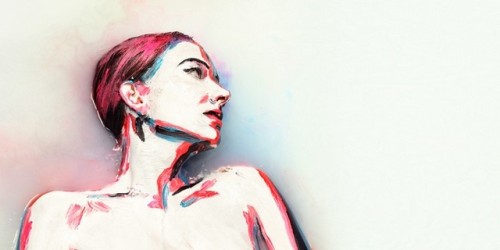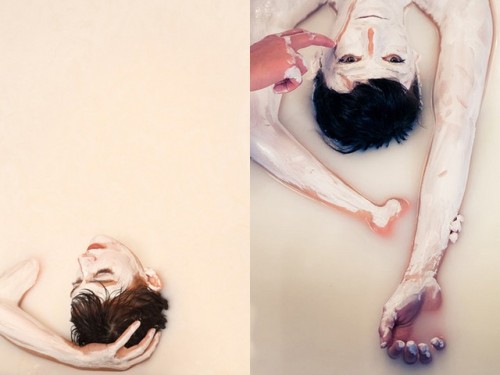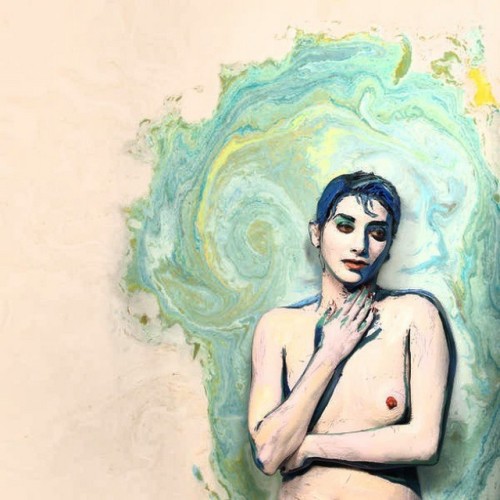#illusionism
DOMUS AUGUSTI







Suetonius mentions the house of Augustus on the Palatine Hill several times. He underscores the size of the first emperor’s house:
- He lived … on the Palatine, but in the no less modest dwelling of Hortensius, which was remarkable neither for size nor elegance [ … sed nihilo minus aedibus modicis Hortensianis, et neque laxitate neque cultu conspicuis], having but short colonnades with columns of Alban stone and rooms without any marble decorations or handsome pavements. For more than forty years too he used the same bedroom in winter and summer …
He draws attention to an architectural anomaly and a distinctive feature of the house:
- He reared the temple of Apollo in that part of his house on the Palatine for which the soothsayers declared that the god had shown his desire by striking it with lightning. He joined to it colonnades with Latin and Greek libraries, and when he was getting to be an old man he often held meetings of the senate there as well.
- If ever he planned to do anything in private or without interruption, he had a retired place at the top of the house, which he called “Syracuse” and “technyphion.”
In compliance with traditional religion, Octavian erected a temple on the spot where lightning struck his property in 36 BC. To compensate him for his pious act and loss of real estate, the senate awarded him the public lands surrounding the temple. The temple flanked by libraries and colonnades enclosed a precinct is a precursor of the imperial Forum Augustus built decades later. The upper chamber, the so-called studiolo, survives; its mural and ceiling decoration clearly reflect the emperor’s taste.
For Suetonius, the house is an outward sign of the emperor’s political self-fashioning . Its modest size and the inconvenient temple attest to Augustus’ calculated observance of traditional standards of decorum and his public image of selfless service to the republic.
The mural decoration of the house is for the most part painted in a modified version of the Second Style of Pompeii. Compared to the contemporary frescos of Boscoreale or Oplontis, the architectural illusionism of the Palatine residence is less crowded with incident. The fictive columns, pilasters, capitals, and entablatures are gracefully attenuated and more generously spaced. The architecture often frames spaces devoid of imagery. Large expanses of the fictive wall treatments consist of minimally articulated expanses of opaque color. There are fewer vistas into implied spaces.

The quality of the illusionistic imagery more than compensates for the reduction of quantity. The precision and clarity of trompe l’œil details are astonishing, creating highly convincing illusions of three dimensionality. The exercises in perspectival rendering are much more rigorous and systematic than the more casual “fishbone” approach used in Campania. The confident execution of technically demanding passages, like the representation of lustre on metal surfaces in the unreflective medium of fresco attest to the skill of the artists.

above: Triclinium Fresco from the Villa of Agrippa Postumus at Boscotrecase, c. 20 BC, New York, Metropolitan Museum of Art.
The less-is-more aesthetic of the Domus Augusti fresco style surely reflects the understated personal taste of the patron. The decoration of the ceiling in the most private part of the house, the studiolo, is the clearest expression of that taste. The light and airy vinescrolls, elongated ornamental objects and high artificiality of the fresco and stucco ceiling decoration clearly strongly resembles the emergent Third Style. Exemplified by the fresco decoration of the Villa of Augustus’s righthand man Agrippa at Boscotrecase, the fictive architecture of the Third Style has been shorn of its illusionistic setting, transformed from a supporting to a framing structure, and its constituent members deployed in defiantly illogical, ungrounded configurations that violate the basic principles of classical architecture.

above: Studiolo ceiling decoration and Lower cubiculum fictive vault coffering, c. 20 BC, Rome, Domus Augusti.
Although less severely minimalistic, the studiolo ceiling breaks with tradition as cleanly as the Boscotrecase paintings. In the other, more public, parts of the house, however, the familar, veristic Second Style, is more or less maintained (the fictive vault coffering of the Lower Cubiculum could plausibly be described as First Style). Augustus was the master of having it both ways and the Domus Augusti mural cycle could be interpreted as another example of the de iure preservation and de facto disregard of tradition.







